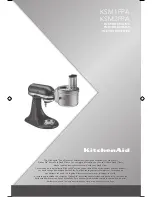
38
limiter bargraph for that band. In fact, instead of reducing the output of one of the audio bands in
the Final Mixer section, you could instead “dynamically reduce” the level in that band (which also
increases density in that band) by lowering the limiter threshold.
When adjustments are made to limiter thresholds, start by making adjustments in 0.5dB steps.
Reducing the threshold too much can cause the system to create an effect that “sucks out” the
f
requencies in that band. Conversely, the opposite (raising the threshold) will create an
exaggerated effect by over-enhancing certain frequency ranges, as well as causing increased
distortion, since excessive levels from that band will reach the following clipper stage.
Usually, the limiter thresholds are adjusted as a “fine polish” on the final sound. If you are unsure
about how to use the
Lim
it
Thresh
olds, then we recommend that they be left at their well-
researched factory settings.
<-Exit
Click on this option to return to the
Adjust Processing
submenu
Mid Band Limiter
See description of settings for Low Band Limiter
Presence Band Limiter
See description of settings for Low Band Limiter
High Band Limiter
See description of settings for Low Band Limiter
Bass Clipper
The Bass Clipper operates between the output of the Low Band Limiter and the Low Band Mixer, the output of
which feeds the main Clipper. Its purpose is to keep excessive bass out of the main Clipper, reducing bass-induced
IM (in
termodulation) distortion while keeping and even enhancing the bass punch of the program material. There
are two different Bass Clipper styles available, “Girth” and “Tight”. (Described below.)
Clip Drv (Bass Clipper Drive)
Adjusts the drive level to the Bass Clipper over a range of +/-
6 dB. Higher settings will increase
the amount of Bass Clipping, increasing bass density while keeping the actual peak bass level fed
to the Mixer the same This allows you to reduce the Low Band Mixer control to reduce IM
distortion in the following main Clipper without reducing the amount of perceived bass in the
program material. Be careful!
Too much clipping by the Bass Clipper can soften bass 'punch'. It
may also be heard as a “rattling” sound in the bass.
Girth Clip
When “ON”, this Bass Clipper style is designed to create a
phatter
effect to low frequencies, and it
will help create the illusion of more bass on smaller speakers. Also, this algorithm, which is
mathematically derived, will contribute lower midrange IM distortion components to the
spectrum. So live voice, vocals and solo instruments that are present along with strong bass in the
program material will sound cleaner, yet will still create an
in-your-face
effect to the low end.
When both the Girth Clip an
d Tight Clip settings are both set to “OFF”, the Bass Clipper is
effectively bypassed. Both algorithms can be “ON” at the same time but this is not recommended.
















































